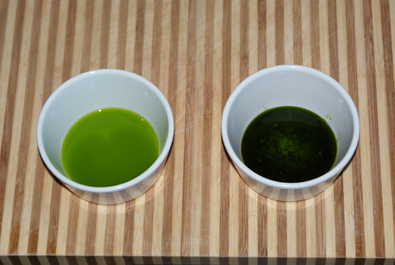
Ingredients
Clarified Butter
ingredient veg
- Method 1
- Melt a stick of butter slowly in a heavy pot, then simmer gently. A froth will form on top and solids settle out to the bottom. Skim off this froth, eventually it will stop forming, the butter will stop fizzing and the solids will turn a pale golden colour. The clear golden liquid is now ready to decant off (or strain) leaving the solids behind.
- Method 2
- Melt down your butter until it foams and turns liquid. Pour into a tall, narrow container. Refrigerate overnight. The next day, scrape the solidified fat off the top, peeling it away carefully and discarding it. With a sharpening steel, punch a hole in the solidified butter, extending the hole all the way to the bottom of the container. Turn the container upside down and the milk solids and water should pour right out. Now slowly heat the remaining product until it is liquid and clear. You're ready to go.
Ingredients:
Dry-Cured Black Olives
I invariably use these delicious, full-flavoured black olives in salads or tagines.
The curing method, favoured in Morocco, is known variously as salt-curing, dry-curing, oil-curing and Kuru Sele, and involves pickling the olives in salt, which draws moisture from the olives, leaving them strongly-flavoured and wrinkly-looking.
The versions I have come across also still have their stones inside so they take a bit more preparation, but I've always found the brine-soaked black olives to be almost completely tasteless.
The curing method, favoured in Morocco, is known variously as salt-curing, dry-curing, oil-curing and Kuru Sele, and involves pickling the olives in salt, which draws moisture from the olives, leaving them strongly-flavoured and wrinkly-looking.
The versions I have come across also still have their stones inside so they take a bit more preparation, but I've always found the brine-soaked black olives to be almost completely tasteless.
Spinach Oil
ingredient veg vegan
I first tried making spinach oil using the traditional technique (e.g. as for basil oil) of blanching the spinach,
squeezing it out and then just blending the leaves with cold (olive, in this case) oil and straining out.
The problem with this method was that the flavour of the spinach didn't seem to come through very strongly, the olive oil dominated the taste of the oil completely, and the mixture was a pasty creamy green colour which wasn't particularly attractive.
However, once I tried cooking the blanched spinach in the oil a very different a very different product was produced.
I let the blanched, minced spinach cook gently in olive oil until it turned a deep emerald colour. The cooking not only deepens and strengthens the spinach flavour extracted from the pulp, but simultaneously softens and rounds the olive oil notes. The result is lovely harmoniously well-balanced oil.
I've also made this using a combination of butter and olive oil - I suppose it just depends what you want to use it for.
I'm not sure if the spinach really needs blanching before cooking up in the oil - I shall have to try just chopping the spinach in raw.
Ingredients:
The problem with this method was that the flavour of the spinach didn't seem to come through very strongly, the olive oil dominated the taste of the oil completely, and the mixture was a pasty creamy green colour which wasn't particularly attractive.
However, once I tried cooking the blanched spinach in the oil a very different a very different product was produced.
I let the blanched, minced spinach cook gently in olive oil until it turned a deep emerald colour. The cooking not only deepens and strengthens the spinach flavour extracted from the pulp, but simultaneously softens and rounds the olive oil notes. The result is lovely harmoniously well-balanced oil.
I've also made this using a combination of butter and olive oil - I suppose it just depends what you want to use it for.
I'm not sure if the spinach really needs blanching before cooking up in the oil - I shall have to try just chopping the spinach in raw.
Ingredients:
- spinach
- olive oil
Parmesan Crisps
starter side cheese

These are rather tasty crispy parmesan disks that are quite straightforward to make,
though it did take me a bit of practice to get right.
I originally tried making them to provide a measure of texture to a stuffed squid meal that I've been working on for some time.
I remember first reading about the idea somewhere so they're not entirely my own work but I have put a lot of effort into playing around with them.
I was hoping to be able to make some flavoured versions, experimenting with sprinkling the parmesan with crushed dried spinach, spinach oil, ground dried scallop corals and with grated lemon zest (which just burns), but nothing really worked.
The cheese is quite sensitive to the cooking time and temperature - watching the crisps closely - they first bubble furiously with oil, then darken to wheat colour, then stop bubbling so much, then start darkening at the edges, then burn.
The optimal point of readiness seems to be at the point they just stop bubbling. Cook them for much longer and they become too frangible and fall apart when you try to peel them away from the baking tray (using greaseproof paper definitely doesn't help).
Cook them for much less and they don't crisp up properly, remaining chewy.
I've also tried using Gruyère for a milder flavour which does make decent crisps, but it is slightly more tricky to get right, takes a little longer (around 6 minutes) and the cheese produces considerably more oil.
I originally tried making them to provide a measure of texture to a stuffed squid meal that I've been working on for some time.
I remember first reading about the idea somewhere so they're not entirely my own work but I have put a lot of effort into playing around with them.
I was hoping to be able to make some flavoured versions, experimenting with sprinkling the parmesan with crushed dried spinach, spinach oil, ground dried scallop corals and with grated lemon zest (which just burns), but nothing really worked.
The cheese is quite sensitive to the cooking time and temperature - watching the crisps closely - they first bubble furiously with oil, then darken to wheat colour, then stop bubbling so much, then start darkening at the edges, then burn.
The optimal point of readiness seems to be at the point they just stop bubbling. Cook them for much longer and they become too frangible and fall apart when you try to peel them away from the baking tray (using greaseproof paper definitely doesn't help).
Cook them for much less and they don't crisp up properly, remaining chewy.
I've also tried using Gruyère for a milder flavour which does make decent crisps, but it is slightly more tricky to get right, takes a little longer (around 6 minutes) and the cheese produces considerably more oil.
Ingredients:
- Parmesan or other hard cheese?
Method
Preheat the oven to 190°C for a fan-assisted oven or Gas Mark 6 for the old-fashioned version.
Grate some parmesan and spoon into metal bun tins, or just make small piles on a baking tray. It helps to cover the tray with silicon (but not parchment) baking paper. Shape the parmesan into disks and press them down lightly with the back of your spoon.
Cook in the oven for 5 minutes, during which time the disks will collapse into themselves, bubble, then start to darken to a wheat colour. That's the time to remove them.
They come out of the baking tins quite easily when they are hot and pliable (and can then be shaped, if you fancy making them look like Pringles), but also chip out easily enough when cooled.
Leave to dry on some kitchen paper to absorb the copious amounts of oil.
They certainly do turn nice and crispy when they've cooled, and stay crispy for hours, though not days.
They are also delicious!
Grate some parmesan and spoon into metal bun tins, or just make small piles on a baking tray. It helps to cover the tray with silicon (but not parchment) baking paper. Shape the parmesan into disks and press them down lightly with the back of your spoon.
Cook in the oven for 5 minutes, during which time the disks will collapse into themselves, bubble, then start to darken to a wheat colour. That's the time to remove them.
They come out of the baking tins quite easily when they are hot and pliable (and can then be shaped, if you fancy making them look like Pringles), but also chip out easily enough when cooled.
Leave to dry on some kitchen paper to absorb the copious amounts of oil.
They certainly do turn nice and crispy when they've cooled, and stay crispy for hours, though not days.
They are also delicious!
Sugar Syrup
ingredient veg vegan
Good for cocktails - particularly Margaritas.
Makes 1 cup
Ingredients
- 1 cup water
- 2 cups sugar
Bring a cup of water to the boil and add 2 cups of sugar, stirring until the sugar completely dissolves.
Let the syrup cool completely and then chill before use.
Let the syrup cool completely and then chill before use.
Pomegranate Molasses
ingredient veg vegan
An excellent ingredient for Middle Eastern salad dressings - tart and sweet at the same time.
Also good for adding to stews, marinating or glazing meat roasts, drizzling over roast vegetables, adding to dips, relishes, iced teas and cocktails. You can use it as a general substitute for vinegar, honey or even lemon juice.
Also good for adding to stews, marinating or glazing meat roasts, drizzling over roast vegetables, adding to dips, relishes, iced teas and cocktails. You can use it as a general substitute for vinegar, honey or even lemon juice.
Ingredients
- pomegranate seeds or juice
All you need to do is gently reduce pomegranate juice over a low heat until it becomes thick and syrupy.
Job done.
You can start with bought juice, or seed and juice a pomegranate yourself, in which case you want to be sure not to include any of the bitter pith. If you slice the pomegranate across the middle and then pop each half back to invert it, it will open up nicely so you can more easily free the seeds. If you struggle to clean the seeds up it can help to cover them in water and pick out pith which will float to the surface.
Run the seeds through a juicer, if you have one, otherwise you can grind them in a food processor, then carefully strain them through a fine sieve or muslin. Be warned though - pomegranate juice stains strongly.
Job done.
You can start with bought juice, or seed and juice a pomegranate yourself, in which case you want to be sure not to include any of the bitter pith. If you slice the pomegranate across the middle and then pop each half back to invert it, it will open up nicely so you can more easily free the seeds. If you struggle to clean the seeds up it can help to cover them in water and pick out pith which will float to the surface.
Run the seeds through a juicer, if you have one, otherwise you can grind them in a food processor, then carefully strain them through a fine sieve or muslin. Be warned though - pomegranate juice stains strongly.
Ginger Syrup
ingredient veg vegan
A handy ingredient for smoothies.
Ingredients
- 1-2 cups sugar
- 1 cup water
- ½ cup sliced ginger
Peel and thinly slice the ginger until you have about half a cup.
Meanwhile mix the sugar and water and bring to the boil.
Simmer gently until the sugar dissolves, stirring occasionally.
Add the ginger and simmer for another 15 minutes.
Refrigerate until ready to use.
Meanwhile mix the sugar and water and bring to the boil.
Simmer gently until the sugar dissolves, stirring occasionally.
Add the ginger and simmer for another 15 minutes.
Refrigerate until ready to use.
Praline
ingredient veg vegan
Ingredients
- caster sugar
- nuts
- liqueur optional
Weigh out as much sugar as you have nuts.
Gently heat the sugar in heavy saucepan until it melts and turns to caramel, but watch it doesn't burn. Swirl the pan without stirring (which can encourage crystals to form). The colour should go through butter, honey to hazelnut and there should be no sugar crystals left. If necessary you can use a wetted pastry brush to push sugar crystals down the sides of the pan to incorporate them.
Throw in your nuts and make sure they are well coated.
Pour out onto waxed paper or tin foil. Smooth down (if you want) with a buttered spatula. Leave to cool (30 minutes or so).
Now you can break it into manageable pieces or grind it to a powder to make pralin.
Gently heat the sugar in heavy saucepan until it melts and turns to caramel, but watch it doesn't burn. Swirl the pan without stirring (which can encourage crystals to form). The colour should go through butter, honey to hazelnut and there should be no sugar crystals left. If necessary you can use a wetted pastry brush to push sugar crystals down the sides of the pan to incorporate them.
Throw in your nuts and make sure they are well coated.
Pour out onto waxed paper or tin foil. Smooth down (if you want) with a buttered spatula. Leave to cool (30 minutes or so).
Now you can break it into manageable pieces or grind it to a powder to make pralin.
I made a batch of powdered praline for pumpkin ice cream using pecans and a tablespoon of Amaretto.
Wasabi
So wasabi is actually grated from a greenish root (rhizome) that although it is often referred to as
Japanese horseradish is in fact completely unrelated. Though you can see why.
That's what real wasabi is anyway. What you will have tried isn't wasabi at all, but ersatz wasabi made from blending various mustards or horseradish with some green food colouring.
I finally got hold of some actual wasabi by buying a (expensive) piece of root mail-order from a British company that manages the famously tricky task of growing it here.
I also bought a tiny sharkskin-style steel grater for it too - might as well do the job properly eh?
Slightly dissappointingly, freshly-grated genuine wasabi root doesn't differ all that much from imitation wasabi! It has a slightly sweeter, more complex flavour with a sharper nasal assault.
You need to give it time to develop after grating, and it loses its flavour after a few hours, plus I also noticed that the root can acquire a rather bitter flavour after keeping it (obviously) too long in the fridge after delivery.
Altogether a worthwhile effort - but I have to say that wasabi is a pretty good substitute.
That's what real wasabi is anyway. What you will have tried isn't wasabi at all, but ersatz wasabi made from blending various mustards or horseradish with some green food colouring.
I finally got hold of some actual wasabi by buying a (expensive) piece of root mail-order from a British company that manages the famously tricky task of growing it here.
I also bought a tiny sharkskin-style steel grater for it too - might as well do the job properly eh?
Slightly dissappointingly, freshly-grated genuine wasabi root doesn't differ all that much from imitation wasabi! It has a slightly sweeter, more complex flavour with a sharper nasal assault.
You need to give it time to develop after grating, and it loses its flavour after a few hours, plus I also noticed that the root can acquire a rather bitter flavour after keeping it (obviously) too long in the fridge after delivery.
Altogether a worthwhile effort - but I have to say that wasabi is a pretty good substitute.
Jus de Fraises,
Strawberry Juice
Strawberry Juice
Strawberry juice
veg vegan ingredient sauce
Purely strawberry. A nice sauce for adding to a salad dressing, or serving with ice cream or crème brûlée.
Makes about ½ pint
Ingredients
- 500g/1 lb ripe strawberries, hulled and sliced
Place the strawberries in a heatproof bowl.
Cover with cling film and set the bowl over a pan of simmering water for 25-30 minutes,
or until the juice has drained fully from the fruit.
Meanwhile, line a sieve with damp muslin or other thin cloth hairnets are pretty good too and place over a bowl.
Remove the heatproof bowl from the heat and pour its contents through a sieve. When all the juice has dripped through the sieve, discard the fruit pulp and chill until required.
Meanwhile, line a sieve with damp muslin or other thin cloth hairnets are pretty good too and place over a bowl.
Remove the heatproof bowl from the heat and pour its contents through a sieve. When all the juice has dripped through the sieve, discard the fruit pulp and chill until required.
Tasty. It definitely helps if you have nice ripe strawberries.
Dried Strawberry Slices
veg vegan raw ingredient
My Julie Diane dehydrator, identical to this one,
has a comprehensive set of drying temperatures, which on some probing with a thermometer,
turn out to be largely fictional. It consistently claims 15°C hotter than it is.
So beware.
So beware.
Ingredients
- strawberries
- sugar syrup if you like 'em extra-sweet
Wash the strawberries, drain, core them (carefully so as to avoid cutting too deeply or your slices will fall apart).
Slice into ⅛-¼". Lay in your dehydrator for 10-14 hours at 55°C/130°F.
Fine. It helps if you can find tasty ripe strawberries.
If you like them sweeter you can simmer the slices in sugar syrup for 10 minutes, then drain them thoroughly before you dry them.
If you like them sweeter you can simmer the slices in sugar syrup for 10 minutes, then drain them thoroughly before you dry them.
Fruit Coulis
Berry Sauce
ingredient sauce veg vegan
From the Latin for strain, ah those Latins - always first with their terms,
a coulis is a thick sauce made from puréed (and strained) fruits or vegetables.
It's the easiest thing in the world, and you can do this with more-or-less any berries - raspberry, blackberry, blackcurrant, gooseberry etc. Strawberries are a bit too delicate for this method, though, and you'd be better making jus de fraises.
It's the easiest thing in the world, and you can do this with more-or-less any berries - raspberry, blackberry, blackcurrant, gooseberry etc. Strawberries are a bit too delicate for this method, though, and you'd be better making jus de fraises.
Ingredients
- berries
- splash suitable liqueur or water
- sugar optional
Clean your berries of choice and put them in a small pan, lubricated with a splash of water or a suitable liqueur,
say Chambord for raspberries, Crème de Mûre for blackberries, Crème de Cassis for blackurrants, etc.
Cook the fruit gently until they collapse, add a little bit of sugar if they aren't sweet enough.
Allow to cool - you can run the fruit through a food processor if you like, though it's not usually necessary.
Press the pulp through a fine sieve.
Job done.
Allow to cool - you can run the fruit through a food processor if you like, though it's not usually necessary.
Press the pulp through a fine sieve.
Job done.
Dehydrated Lemon Juice
ingredient veg vegan
Yep it's a thing - and I invented it!
I was curious about how I might make a sour concentrate for dressings, without just boiling up lemon juice which I figured it would denature any vitamins and lose the intensity of flavour. So I slipped a shallow bowl of freshly squeezed lemon juice into my dehydrator and ran it for a few hours. What came out was a syrupy jelly, which eventually turned quite firm though not quite taking on the consistency of fruit leather. Probably due to the lack of fruit pulp and added sugar.
This lemon jelly has all the intensity of the fruit juice, but lasts for aaaages. I kept some in the fridge for months perhaps it doesn't even need to be kept cold? then used it to good effect in a batch of fasolia added at the end insted of fresh lemon juice.
I plan on selling it to sailors to fight off scurvy!
Or maybe using it as a super-sour dressing ingredient.
I was curious about how I might make a sour concentrate for dressings, without just boiling up lemon juice which I figured it would denature any vitamins and lose the intensity of flavour. So I slipped a shallow bowl of freshly squeezed lemon juice into my dehydrator and ran it for a few hours. What came out was a syrupy jelly, which eventually turned quite firm though not quite taking on the consistency of fruit leather. Probably due to the lack of fruit pulp and added sugar.
This lemon jelly has all the intensity of the fruit juice, but lasts for aaaages. I kept some in the fridge for months perhaps it doesn't even need to be kept cold? then used it to good effect in a batch of fasolia added at the end insted of fresh lemon juice.
I plan on selling it to sailors to fight off scurvy!
Or maybe using it as a super-sour dressing ingredient.
Ingredients:
- lemon juice
Pour the lemon juice into a shallow bowl and put in your dehydrator at around 55°C/130°F until thickened and syrupy. Probably about 12 hours.
My Favourite Olive Oil
Yep, I have a favourite olive oil.
Ludicrously expensive Italian deli Valvona and Crolla had an olive-oil tasting (apparently that's a thing), and this was the best.
The Ardoino family's Fructus extra virgin olive oil.
On their estate in Liguria they use only olives which have fallen naturally or by shaking the branches with a long rod (bacchiatura), stone ground, then cold pressed through woven mats (fiscoli).
Seems to be quite hard to get hold of though - I'm guessing they don't make much :(
Ludicrously expensive Italian deli Valvona and Crolla had an olive-oil tasting (apparently that's a thing), and this was the best.
The Ardoino family's Fructus extra virgin olive oil.
On their estate in Liguria they use only olives which have fallen naturally or by shaking the branches with a long rod (bacchiatura), stone ground, then cold pressed through woven mats (fiscoli).
Seems to be quite hard to get hold of though - I'm guessing they don't make much :(
Fragata Anchovy Stuffed Olives
Those bright green, giant, sweet nocerella del belice olives
from Castelvetrano in Sicily are delicious for snacking on
but Martin Wishart introduced me to these even tastier Fragata brand stuffed Manzanilla olives from Spain.
Highly recommended.
Highly recommended.
My Favourite Truffle Oil
Truffle Hunter's White Truffle Oil
seems to be the only truffle oil (at least, the only one I've discovered) that actually has some truffle in it, and it tastes really good too!
Most so-called truffle oils, particularly those you'll find at your Local Fucking Supermarket™, are merely chemically flavoured with such ersatz organosulfur compounds as 2,4-dithiapentane.
Yum!
Most so-called truffle oils, particularly those you'll find at your Local Fucking Supermarket™, are merely chemically flavoured with such ersatz organosulfur compounds as 2,4-dithiapentane.
Yum!
Excellent Vinegars
Forvm vinegars are an oak-aged blend of a single varietal wine vinegar and must (crushed grapes).
Consequently they're very soft, rounded, deep and delicious vinegars particularly ideal for dressings.
Forvm comes in Chardonnay, Cabernet Sauvignon and Merlot flavours.
Highly recommended.
Forvm comes in Chardonnay, Cabernet Sauvignon and Merlot flavours.
Highly recommended.


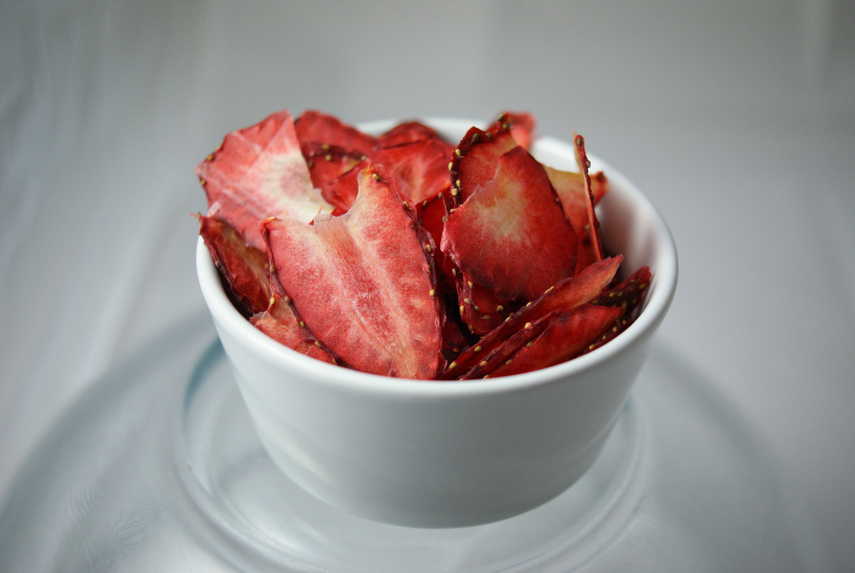
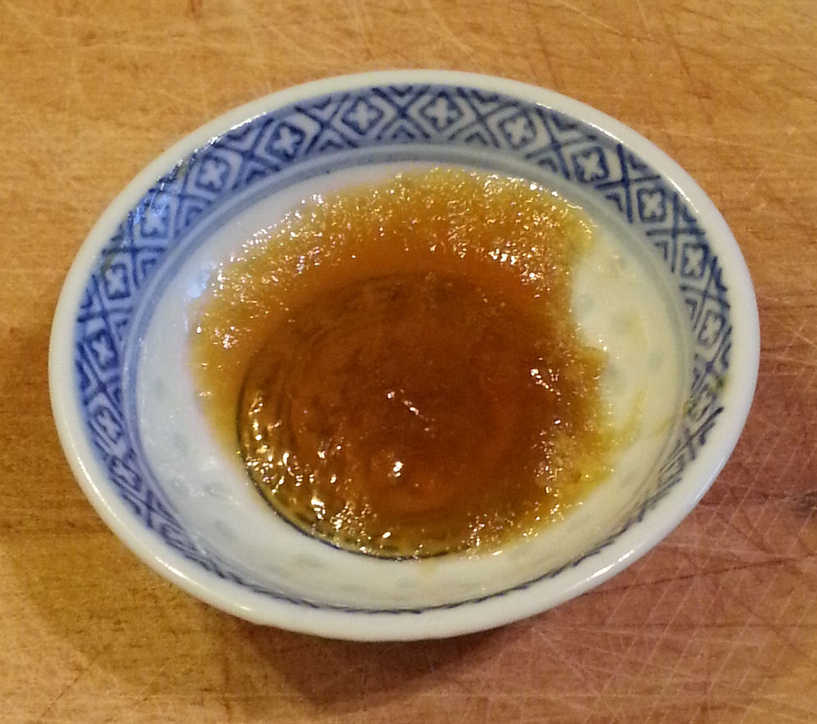
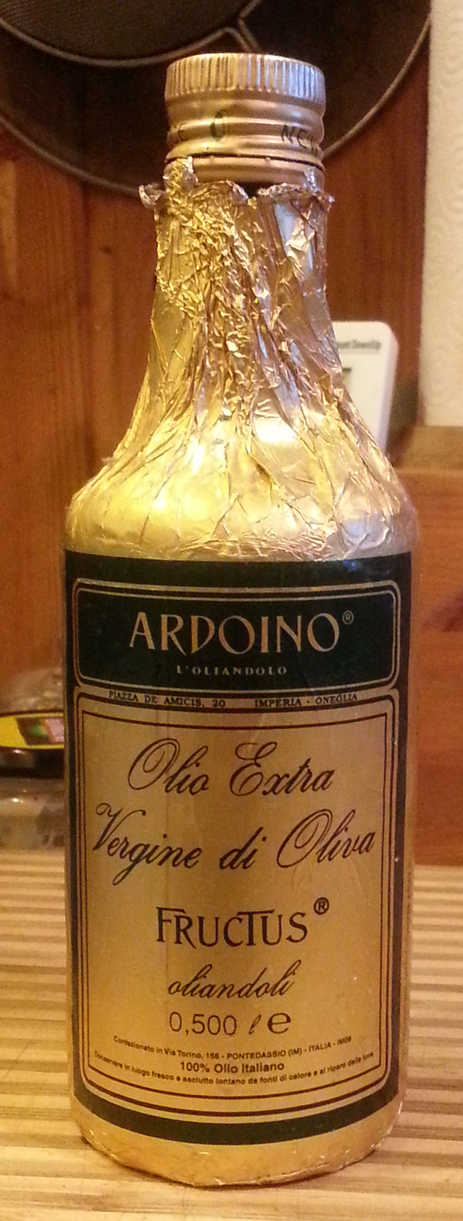
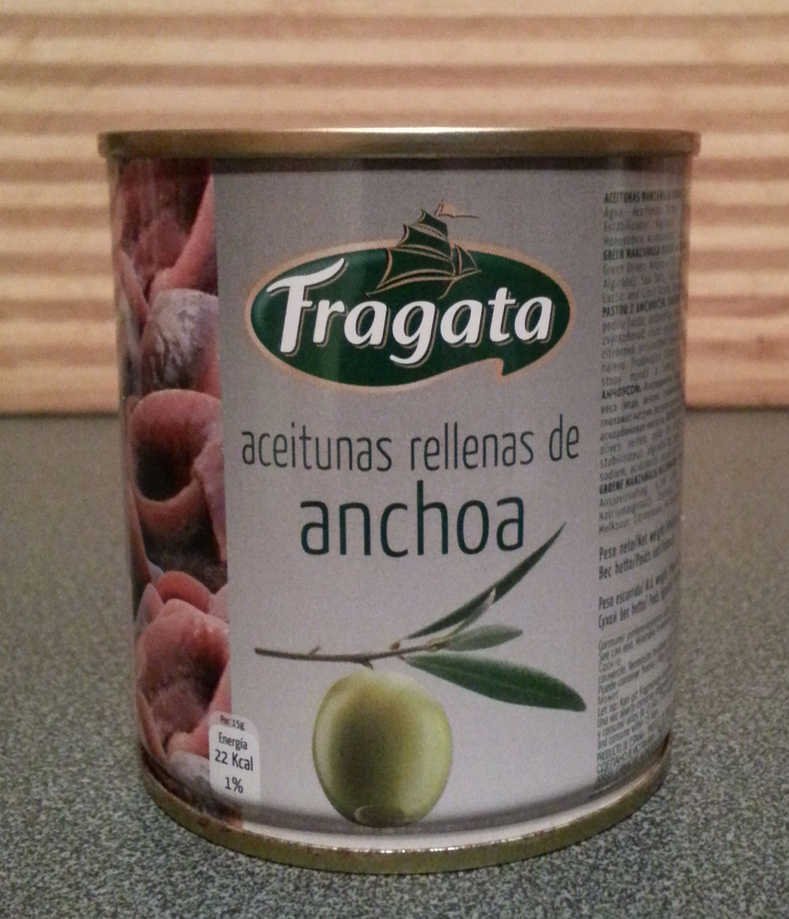

I wonder if it might help to dampen the sugar so it melts uniformly - otherwise it seems very easy to end up with clumps which don't melt until the rest has started burning.